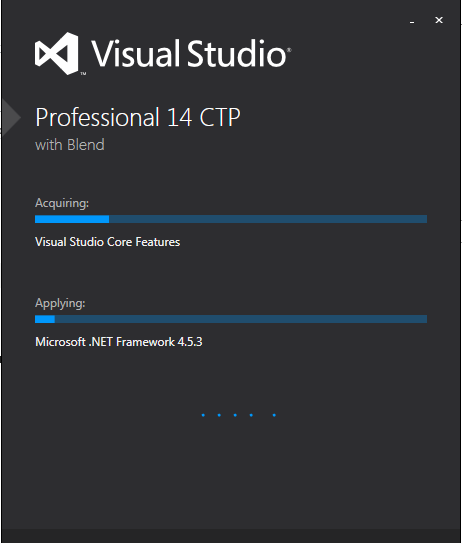Abstract
SOA is a well-known term today, when we think of SOA; WCF comes in mind. Whereas WCF is a Microsoft technology to build SOA based software solutions. This article will help you understand what exactly “SOA” is as per real architectural way, why architects suggest SOA based application architecture and how SOA can be implemented etc.
What is SOA
SOA (Service Oriented Architecture) is an Architectural Design Pattern / Approach, under which distributed and decoupled applications can interact with each other. SOA is NOT a Technology or a Language.
SOA provides the infrastructure to the idea of how two different business entities communicate and work together. E.g. your bank offering Stock services, a travel site with feature to book a flight, a hotel, a car or even a holiday package etc., weather updates and currency rates etc. All such activities take place due to B2B integration; and SOA is the oxygen for such type of business activities.
Before a service can be consumed, a request message needs to be sent to the service (the provider, or callee) by its client (the consumer, or caller). A request message contains information about the operation the service is being asked to perform, and any additional data that the specific operation needs to have before executing. For example, a service that shows you a currency exchange rate needs to have two currency types and how much money you want to convert. E.g. 100 USD to INR
Why SOA
In today’s world we heavily rely on software systems for example a bank’s system communicates to various other software & database systems.
This usually cause Software applications to face following challenges:
- Applications are becoming more and more distributed.
- Business needs are changing very often.
- Collaboration with other systems is becoming key to success of application. E.g. B2B scenario.
- Operation costs need to be reduced.
- Scalable, secure and reliable systems are needed by business.
SOA resolves these challenges by defining standards for interaction between decoupled systems and technologies based on policies and contracts.
SOA Objectives
SOA is intended to provide loosely coupled interaction between applications. Benefits offered by SOA are as follows:
- Agility. Enables your business to adapt changes quickly.
- Productivity. Can implement complex applications using SOA more easily than with other architectural styles.
- Reusability. Able to reuse your services across systems instead of rewriting the same modules again and again in every system or specific to an individual system.
- Reduced cost. Software Architects think of Build vs. Buy vs. Reuse, SOA based approach allows to either buy or reuse this feature/functionality; hence in most of the cases cost is saved by reusing the existing services, a lot of commonly used services are available for free.
Communicating with SOA based Service
SOA based services communicate with outside world via EndPoint(s). Hence, EndPoint is required to communicate with a Service.
- An EndPoint is the access point to the service.
- Accessing internal assets can be done only through the EndPoint.
- The EndPoint controls who can access the service, what operations they can perform, etc.
- Services may expose multiple EndPoint for various reasons (technology, topology, etc.).
Properties of SOA Architecture
Service-Oriented Architecture is based on four tenets:
Services handle data, not objects
Objects are known to have direct dependency on a particular technology, while XML data is not technology-specific. Hence, services communicate by exchanging data as long as they use the same standards by which the service operates.
Services are autonomous
In order to utilize a Service, client does not need to know the implementation technology and various other internal/implementation details. What all a client requires is the service’s address (I.e. EndPoint) and the information to send the data to.
Services have explicit boundaries
The service is responsible for exposing its information. Everything inside the service’s boundary is only accessible through the service EndPoint. The service’s boundaries are explicit, meaning that the service specifies precisely which messages it can receive and what the messages need to contain; messages that are not compliant with these specifications will be rejected with an error message.
Services expose contract and policy
The contract of the service defines the data which client needs to use when calling a service. Service contract also define the response that the service sends back to the client as result of call made to service.
The service’s policy defines additional information about the data that is being sent. For example, a policy can state that the data needs to be encrypted etc.
SOA Benefits
Productivity
- Services are autonomous. Services have explicit boundaries. Services can always be moved to some other location.
- Services depend on data. There is no dependency on the technology that creates the data.
- Service autonomy simplifies testing
- All major development frameworks (Microsoft.NET, Java) embraced SOA.
- Development tools like Microsoft Visual Studio provide an excellent environment for building SOA applications using WCF, ASP .NET WebAPI or ASP .NET WebServices.
Agility





 I am a hands-on architect with proven 19+ years of experience in architecting, designing, and developing distributed software solutions for large enterprises. At Microsoft, as a Principal Software Engineering Manager, I own the Platform team. I see software development as a craft, and I am a big proponent of software architecture and clean code discipline-n-practices. I like to see the bigger picture and make a broader impact. I was also a Microsoft MVP for past 7 years on Visual Studio and Dev Technologies I can be reached at vidya_mct@yahoo.com or twitter @dotnetauthor
I am a hands-on architect with proven 19+ years of experience in architecting, designing, and developing distributed software solutions for large enterprises. At Microsoft, as a Principal Software Engineering Manager, I own the Platform team. I see software development as a craft, and I am a big proponent of software architecture and clean code discipline-n-practices. I like to see the bigger picture and make a broader impact. I was also a Microsoft MVP for past 7 years on Visual Studio and Dev Technologies I can be reached at vidya_mct@yahoo.com or twitter @dotnetauthor



